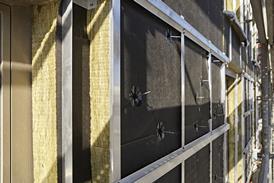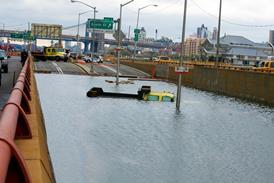The first thing that Gerard should have listed as a priority to be carried out is the "Loop Impedance Test". This should first be carried out as an essential check by the surveyor, the system designer, or the sales engineer to establish that the electrical supply is safe for the company employees to work "on" or "near" (ref: The Electricity at Work Regulations).
This will apply in all cases where external security lighting, CCTV systems, access control systems, intruder alarms and, of course, fire detection systems are to be installed. This will be repeated by the installer once on site to establish that there has been no deterioration in the system before he starts his work.
The next point for consideration is that there is still an electrical test with certification to be completed, even if the company employs a qualified electrical engineer to install a Fused (non -switched) Spur unit. There remains a small length of flex that provides connection from the Fuse Spur to the control equipment to be considered.
This will require verification that the Earth Loop Impedance is satisfactory, that the polarity is maintained, that there is a continuous path for the earth (CPC) even if the panel is a plastic construction, and insulation resistance, followed up, again, by a final Loop Impedance Test to ensure that all remains well.
The question is ... Does the company call back the qualified sparks to carry out these checks when the control equipment is installed, and then ask him for the required small works certification?
Or is it a case of the alarm installer doing the required connections from the Fuse Spur to the control equipment and ...
- not bothering to carry out the mandatory checks and measurements – or even knowing how to carry them out (I dare not ask if he has the appropriate and approved equipment and training!)
- forgetting to complete a small works certificate
- not even asking the qualified sparks for his Small Works Certificate to attach it with his paper work.
Gerard gives mention of ELV and yet fails to note that, as far as the Electricity at Work Regulations go, it covers all voltages from one and half volts to 400 Kv – in fact anything that is connected to the source or "may be".
What about batteries being connected … and, of course, capacitors? A further point to consider is the use of a meter. As I have said, the Regs state "anything that is connected or may be connected".
This will include a Cat II test meter. Most alarm installers do not know about Cat I or Cat II/III meters and where they are permitted to be used, let alone the fact that before any employee is given any equipment, he should have received adequate and approved training in its use.
I quote The Provision and Use of Work Equipment Regulations 1992. How many managers and owners of security companies abide or even know about this regulation and provide required training for their employees?
A point that should also be noted in connection with carrying out certain tests (ie Loop Impedance) is that when carrying out this essential function the equipment used to perform this test must not trip any RCDs – It could be quite costly if one was to knock off the mains and crash a client's computer!
In providing a supply for any security equipment, the source is normally taken from an existing circuit. If it is not, then the new supply taken from a spare fuse in the distribution board is regarded as creating a brand new circuit and, as such, the Small Works Certificate is non-compliant.
To find out more startling facts and obtain your certification and training – why not contact ACT for full information
Source
Security Installer
Postscript
Peter R Moss F. Inst, SMM-I.CFP Engineer, Technical Consultant and Lecturer, FAST Fire & Security Training, Lane End, Strait Lane, Huby Leeds LS17 OHF, presimp@onetel.com





















No comments yet